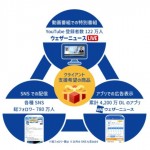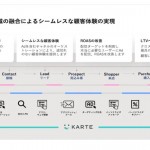RTBの裏側を少しのぞいてみる
Real-time bidding has proven to be a revolutionary advancement in the display world. But what is it really about? While we know there’s a ton of data flowing from one system to another, little is actually known about the communication taking place between the ad exchanges and the various bidders. Let’s take a look under the hood of the ad technologies that have forever changed the media-buying industry.
One thing we need to clarify is that RTB does not mean remnant, or even cheap inventory. The true definition of RTB is real-time bidding, meaning that it’s far more about the transactions taking place between the bidder and exchange than anything else.
Digital display has become a dynamic price-based market much like search. But let’s first take a step back to consider a simplified view of each of the components of the modern RTB ecosystem: the exchange and the bidders. And within these two technology partners exists countless media and data entities.
The ad exchanges are responsible for packaging information about a particular inventory request, and then passing that information on to each bidder. Once the bidder receives the request for a bid, it unpacks the information, determines the value of the particular impression and returns the bid. The highest bidder then reaches the end consumer with a relevant ad message.
Believe it or not, this entire transaction happens in approximately 150 milliseconds. One thing to keep in mind is that dynamic pricing doesn’t necessarily mean lower prices. In fact, Forrester was cited in a recent MediaPost article forecasting that by 2017, CPMs for exchange media will rise from $3.17 to average prices at $6.17.
There are nearly 2.27 billion Internet users worldwide (Internet World Stats) and billions of inventory impressions available. While the exact data used to determine bid price varies by exchange, some common examples include the webpage that the user is on, the referrer page, the language that the browser is set to, the position of the ad (above or below the fold) or whitelist/blacklist information. Additionally, information such as psychographics, and even search activity helps identify relevant audiences. These data points become critical when determining if the user is within the targeted audience of a particular advertiser. In addition, these attributes also play a vital role in dynamic creative and the execution of personalized ad messages – both key to successful campaigns.
Although advertisers may not know exactly where the ad will appear, they can control the message and whom they are reaching by utilizing the data flowing through the technologies. By looking beneath the hood of RTB, marketers will have a better understanding of the scientific approach to display media, and the actual data movement that is taking place in today’s ecosystem.
Read more: http://www.mediapost.com/publications/article/186400/looking-under-the-hood-of-rtb.html#ixzz2B23GxmAL











